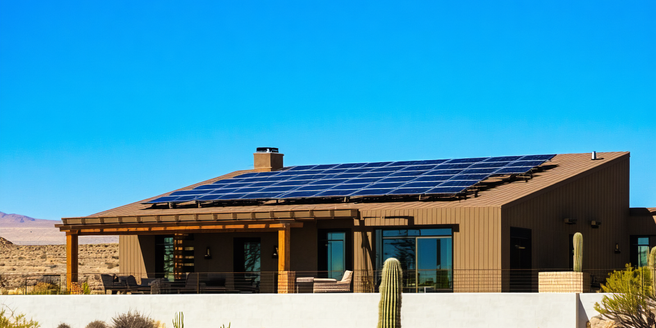
Understanding Desert Climate Challenges
Desert climates bring extreme conditions that require thoughtful approaches to homebuilding. The intense heat, minimal rainfall, and high evaporation rates pose unique challenges for creating a comfortable living environment. Understanding these climate characteristics is essential in building energy-efficient homes that can handle such extremes. Design considerations include orientation to minimize heat gain, utilizing shade effectively, and ensuring proper ventilation. Efficient energy use in desert homes often involves balancing the reduction of heat transfer and maintaining thermal comfort. Architects must account for these variables to create designs that conserve energy while providing adequate living conditions. This understanding lays the groundwork for selecting appropriate materials and techniques to further enhance energy efficiency.
Choosing the Right Construction Materials
Selecting materials suitable for desert climates is crucial for building energy-efficient homes. Reflective and light-colored roofing materials reduce heat absorption, keeping interiors cooler. Thermal mass materials like adobe or concrete can store heat during the day and release it at night, helping to moderate indoor temperatures. Modern advancements include insulated concrete forms and structural insulated panels, which provide high thermal resistance, reducing the need for mechanical cooling. It is also important to choose materials that are durable and can withstand the harsh desert environment, such as UV-resistant paints and robust window framing. Thoughtful material selection helps mitigate the extreme temperatures found in desert climates, making homes more sustainable and energy-efficient.
Insulation Techniques for Extreme Heat
Insulation is a key factor in maintaining energy efficiency in desert climates. Properly insulating a home minimizes heat transfer, keeping indoor temperatures stable and reducing the reliance on air conditioning. Common insulation methods include blown-in cellulose and spray foam, which fill gaps thoroughly and prevent air leaks. Reflective barriers can also be effective in desert homes, as they reflect radiant heat away from living spaces. Insulating windows with double or triple glazing helps prevent heat ingress while maintaining natural light. Sealing leaks around doors and windows and insulating attics and walls protect against extreme heat. These techniques not only improve energy efficiency but also contribute to comfort and reduced energy bills.
Innovative Cooling Solutions
Innovative cooling solutions are vital for managing the intense heat of desert climates. Passive cooling techniques, such as cross-ventilation, utilize natural air currents to cool spaces without energy use. Evaporative coolers, which work effectively in dry conditions, can significantly lower indoor temperatures using less energy than traditional air conditioners. Advanced technologies like phase-change materials offer additional cooling by absorbing excess heat during the day and releasing it at night. Furthermore, zoning systems allow homeowners to cool only the areas in use, optimizing energy consumption. These methods, combined with strategic landscaping to provide shade and reduce heat islands, form a comprehensive approach to cooling solutions that enhance energy efficiency in desert homes.
Maximizing Solar Energy Utilization
In desert climates, ample sunlight presents an excellent opportunity for maximizing solar energy utilization. Solar panels can be installed on rooftops to harness this abundant resource, providing clean and renewable energy to power homes. Photovoltaic (PV) systems convert sunlight directly into electricity, reducing dependency on grid energy and lowering utility costs. Innovations in PV technology have made solar panels more efficient and affordable. Integrating solar water heating systems can further leverage solar energy for domestic use. Homes can also utilize solar passive design, where strategic window placement and thermal mass absorb and retain solar energy, enhancing heating in cooler desert nights. These practices ensure sustainable energy use while supporting environmental conservation efforts.
Smart Water Management Strategies
Water scarcity in desert climates necessitates smart water management strategies to ensure sustainable living. Implementing xeriscaping, a landscaping approach that uses drought-resistant plants, reduces water usage while maintaining aesthetic appeal. Rainwater harvesting systems can capture and store limited rainfall for irrigation and other non-potable uses. Greywater recycling systems help utilize wastewater from baths and sinks for landscaping, further conserving water resources. Installing low-flow fixtures and appliances reduces water consumption indoors without sacrificing performance. Smart irrigation controls that adjust watering schedules based on weather conditions can enhance efficiency. Utilizing these strategies can significantly reduce water usage, crucial for maintaining resources in desert environments, ensuring both environmental and economic sustainability.
